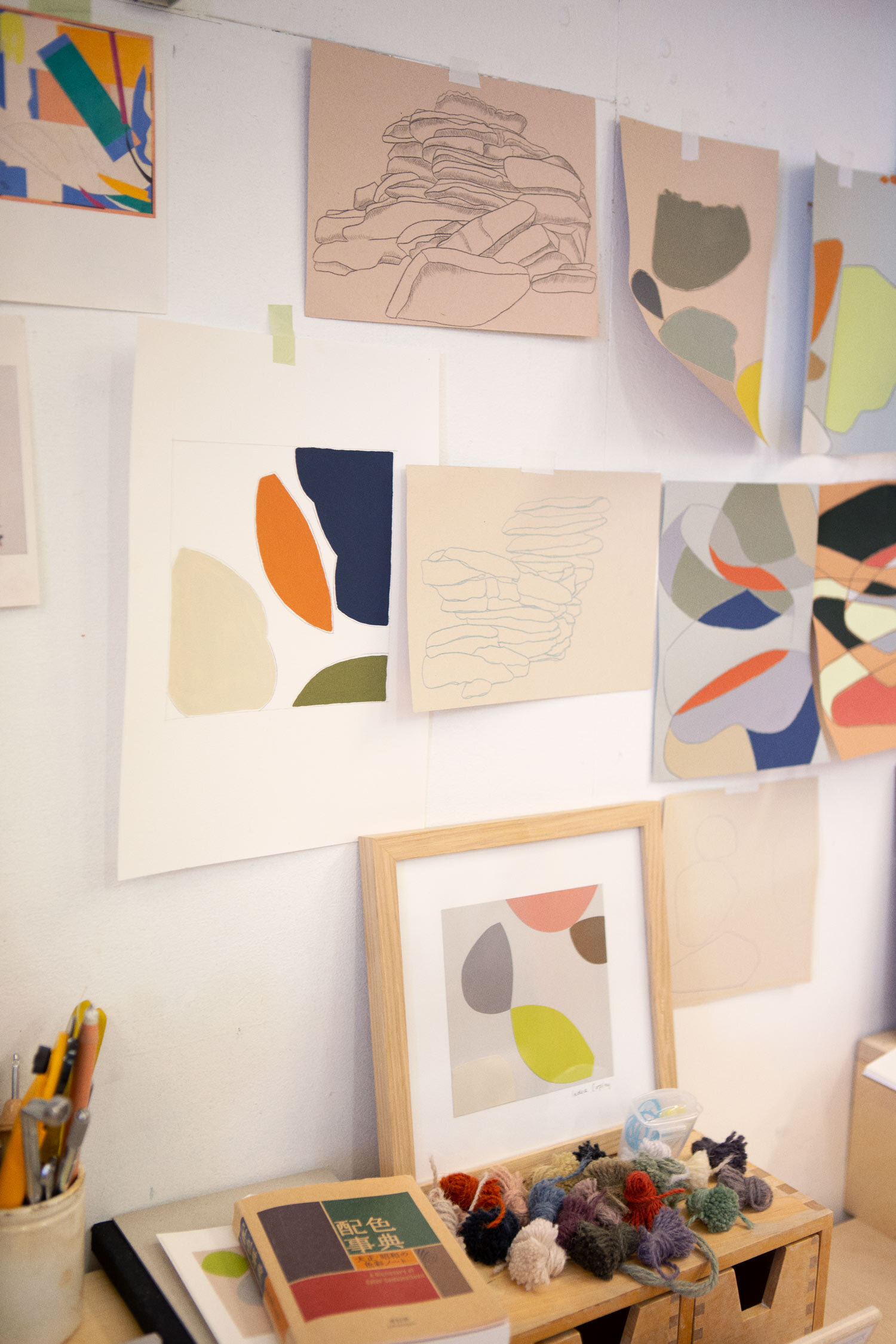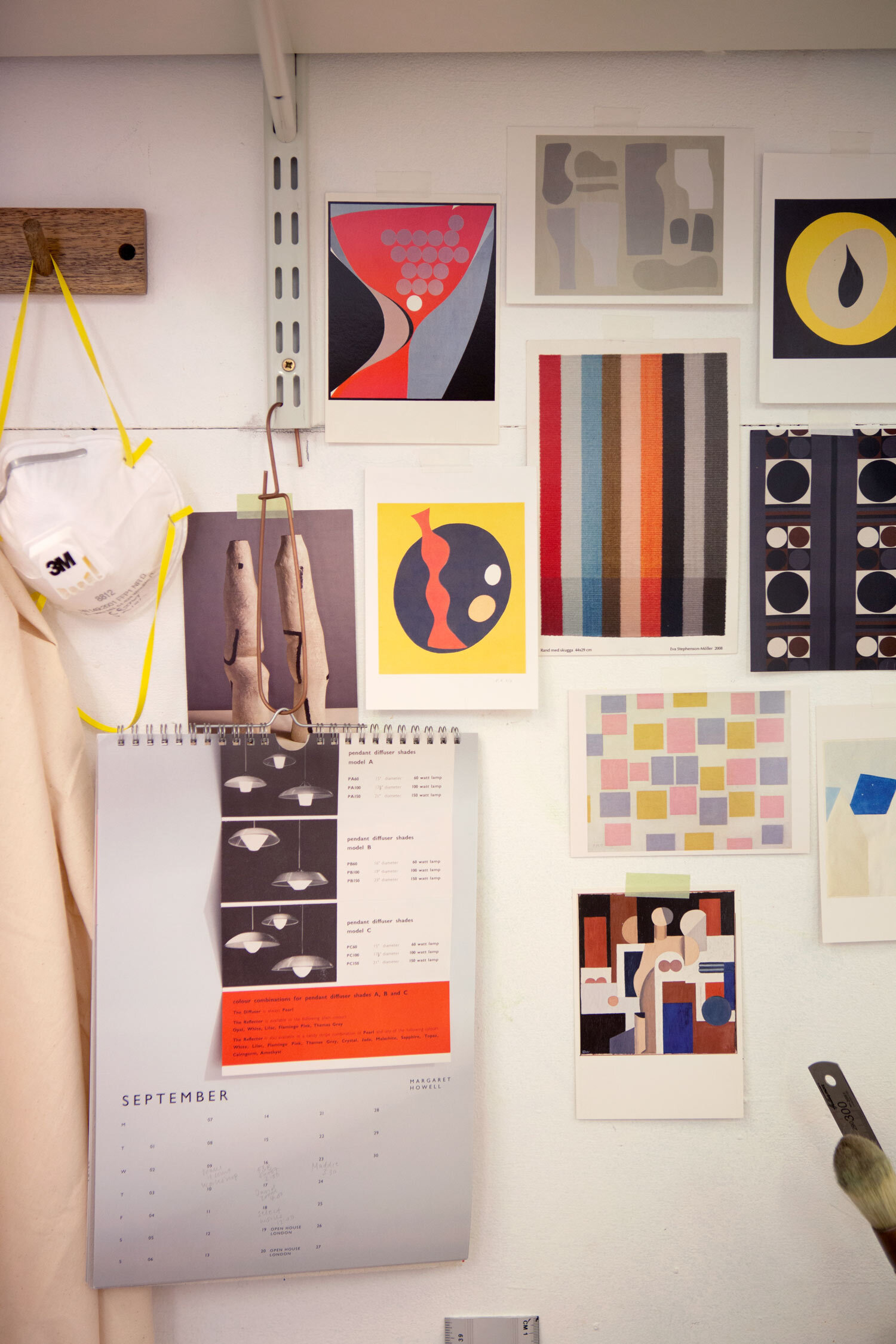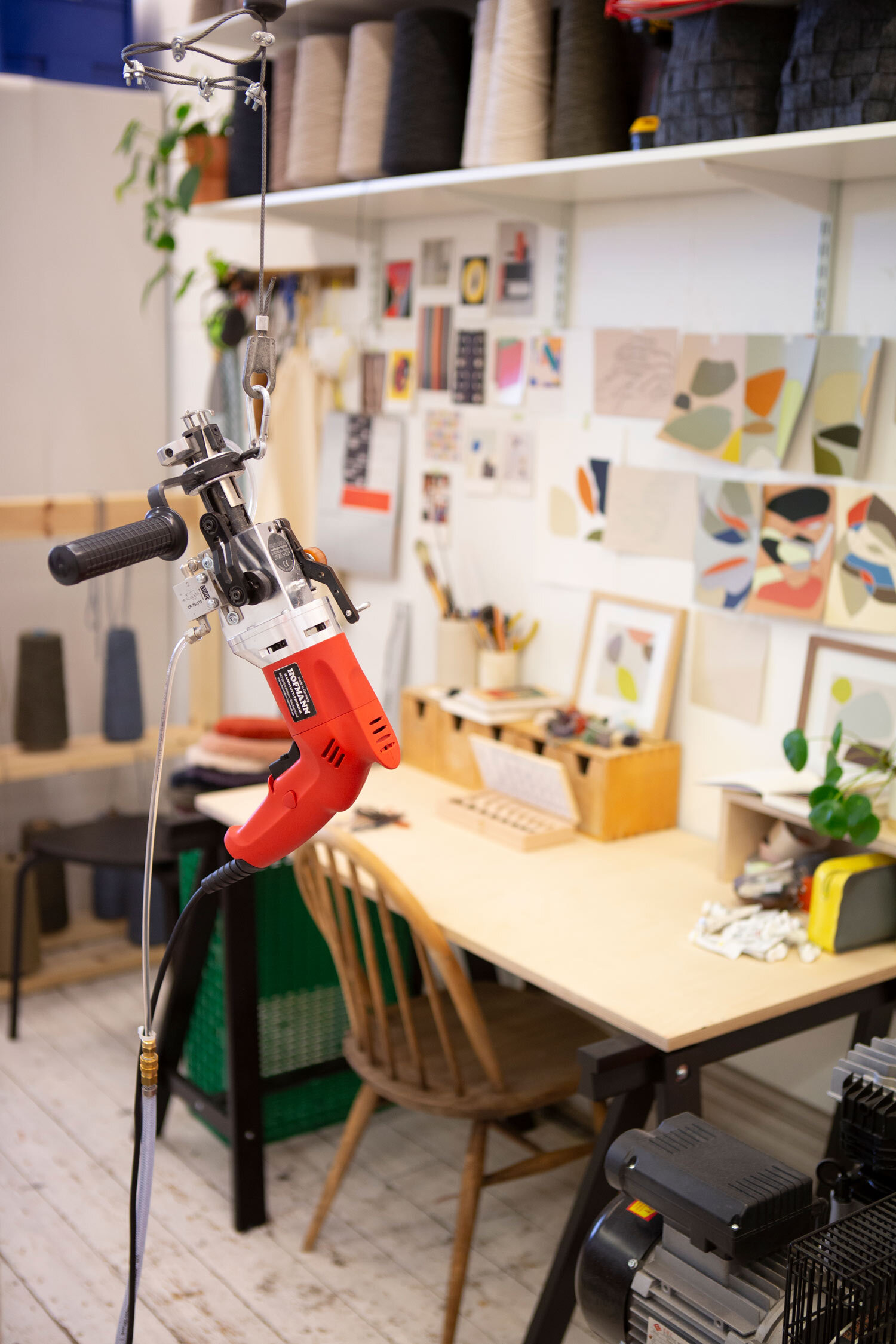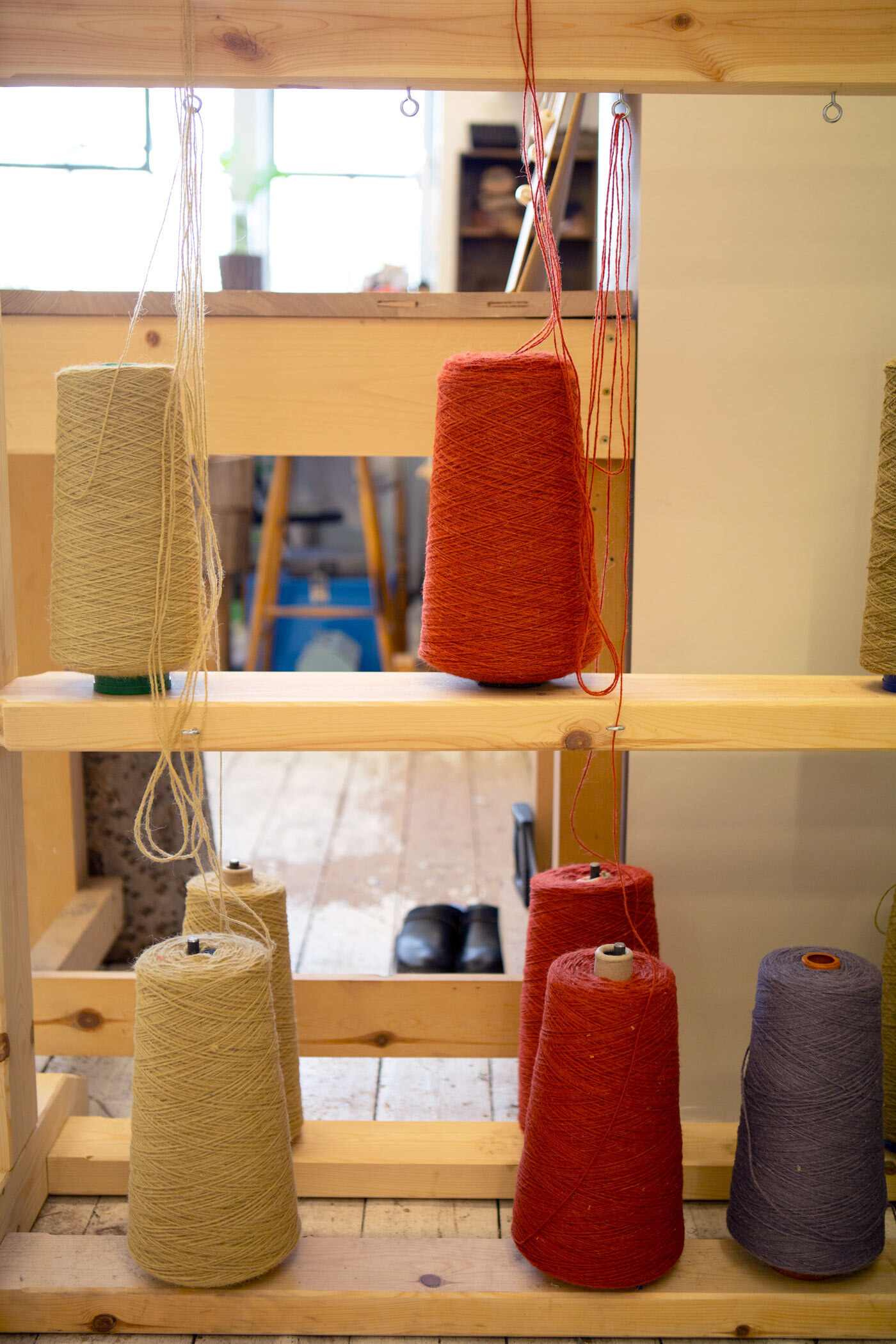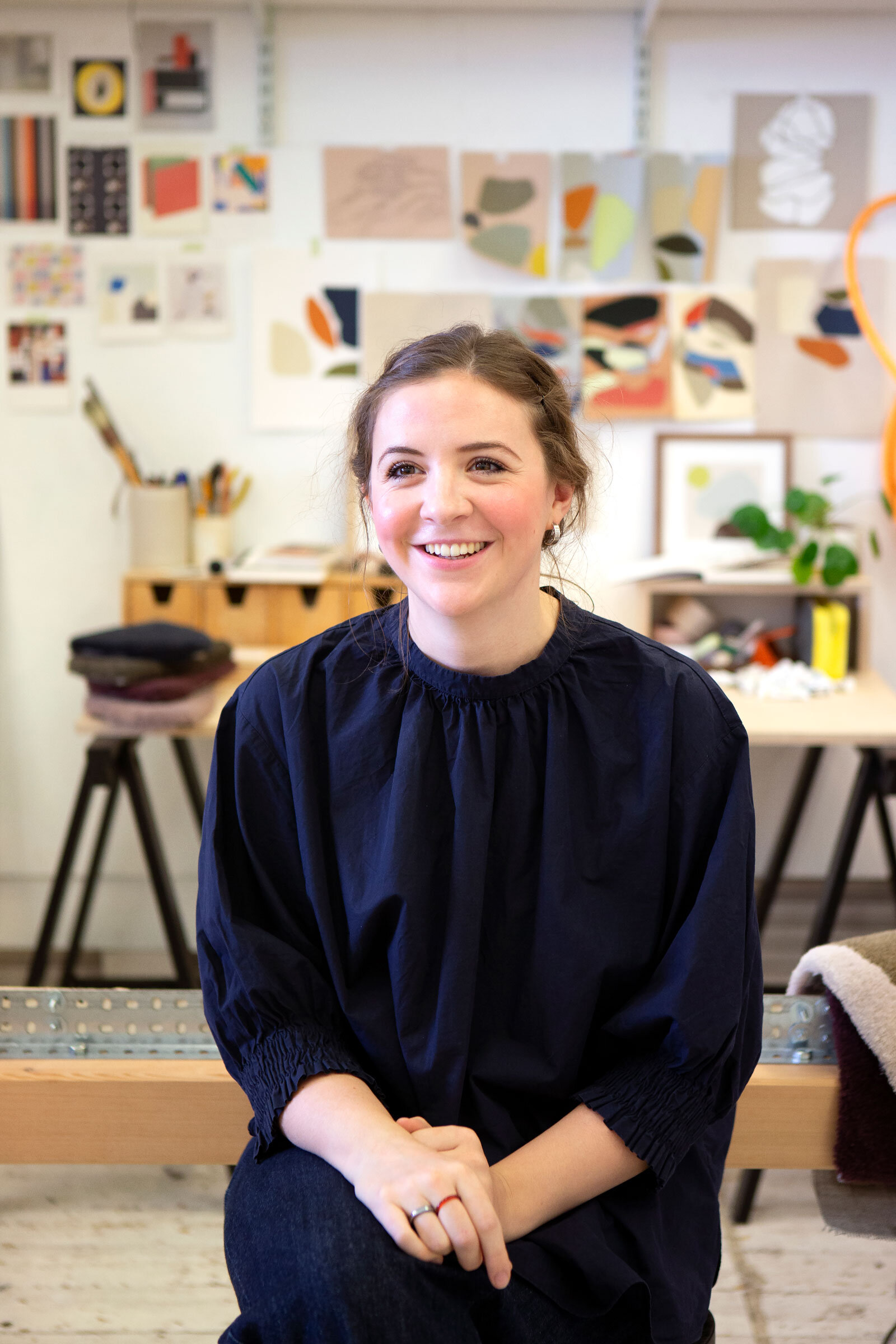Textile designer and artist India Copley navigates space through abstract forms
Making sense of her surroundings through creativity has always been organic to textile designer and artist India Copley. Driven by an innate curiosity to deconstruct the layers of the natural and built environments, her playful explorations of space and form reveal themselves as abstract compositions across multiple mediums.
There is a calmness to the artist’s work that offers a visual remedy for the viewer to swim in, her soothing formations triggering an almost meditative response.
Although pursuing studies in textile design at Chelsea College of Art, for Copley illustration, painting and collage also feature heavily in her development process and often become finished pieces in themselves. She usually works with pencil and paint to explore her ideas on paper, later translating these arrangements into designs for rugs and smaller textile works.
Currently based in Holborn’s Cockpit Arms, a leading studio for contemporary crafts – the artist is a recipient of the organisation’s Make It award for her tufted rug works. Tufting, a type of textile weaving, is a method Copley learnt whilst she spent a short time studying in Sweden. Using a powerful pneumatic gun and considerably-sized wooden frame, the designer is able to create large-scale works composed from the woven technique.
Her space is neatly organised, featuring colour-coordinated rows of yarn shelved above assortments of tools, equipment and paper-covered walls. It’s interesting to see a continuous flow of the artist’s thought process hanging in front of me, moving from sketch to painting to textile.
Copley reveals she’s always been particularly interested in the surfaces around her, “as a kid I was always taking things apart and figuring out how they went back together, from a sort of investigative point of view where I wanted to figure things out and explore them”.
It’s through this interest in problem-solving and how things are constructed that’s guided the artist to build her own paths of process, incorporating different stages of medium into each evolving concept.
“I realised I was really processed-driven in the way that I was doing things and that led me to craft because everything has a step-by-step process to it in the way that there’s always really small sections that all come together at the end.”
“I always start with drawing, college and painting. Then I move on to create sculptural forms from these, to make them three-dimensional.”
She explains that although each discipline varies in approach, they all play a vital role in connecting the dots to the final outcome. The designer comments, “I think recently I've had to really appreciate that they're just such different mediums, it can almost be like I had to do the paper-based work to get to where I am, but it doesn't necessarily mean that it's gonna be a direct reflection on what else I did in the process.”
The colours used in Copley’s designs convey a sense of visual balance, each hue carefully selected to compliment its neighbouring tones. The artist describes how she specifically decides her refined palette whether recreating a scene from nature or architecture.
“I'll pull the main colours from the setting and then start to work with a basic colour selection within that, then I’ll play around and mix and match those together to come up with a coherent colour palette.”
“I think I'm definitely inspired by things that have interesting negative space. It's remembering that the things that aren't there are just as important as the things that are and they create their own shapes.”
Copley reveals she’s often drawn to the feeling of a place, often recreating the locations she visits through quick sketches, photographs or from memory.
“If you can imagine that you're somewhere and you remember how things felt, like if there was a really brisk air. That can then translate into a colour to reflect the mood of the place or the picture that I've taken and also a memory of what I can remember.”
The artist mentions how her work can often feel nostalgic as it relates so closely to a specific time period and place. Her recent series of painted, hand-cut collages were created earlier this year during the UK’s initial lockdown – where Copley worked from a small space in Cornwall. Each day she created a new piece informed by her immediate surroundings, resulting in a new body of work featuring over 50-plus numbered, original collages.
“I was working from a little studio and it had a really amazing view. So I was just basically drawing what I could see and trying to understand and think about things, I obviously spent a lot of time there and I became very familiar with my surroundings. What is also interesting is that as I number them, how they changed over time and how I abstracted my surroundings more and more throughout the collection.”
She describes how the daily task of making each collage became a “ritualistic” process and probably one that kept her sane throughout its duration.
“I didn't even intend for it to be such a big collection. I thought I might make one or two but it somewhat grew over time, which was really nice. It felt really kind of organic and natural to go about it that way.”
Copley continues to use collage in the design development of her tufted textile pieces and reveals they’re still, “a really important part of the process,” but also resolved pieces in themselves.
“I think there’s a kind of magic in being able to translate my drawings into a tufted piece and how I can do that through a physical process. I think it's quite a fascinating process and there’s so many different possibilities that I haven't even begun to explore yet.”
“I feel like I'm literally at the beginning of it all and it's really exciting. I think that's what motivates me is how exciting it is to experiment and play and then think about what new and exciting ideas could arrive.”
See more of India Copley’s work here.

